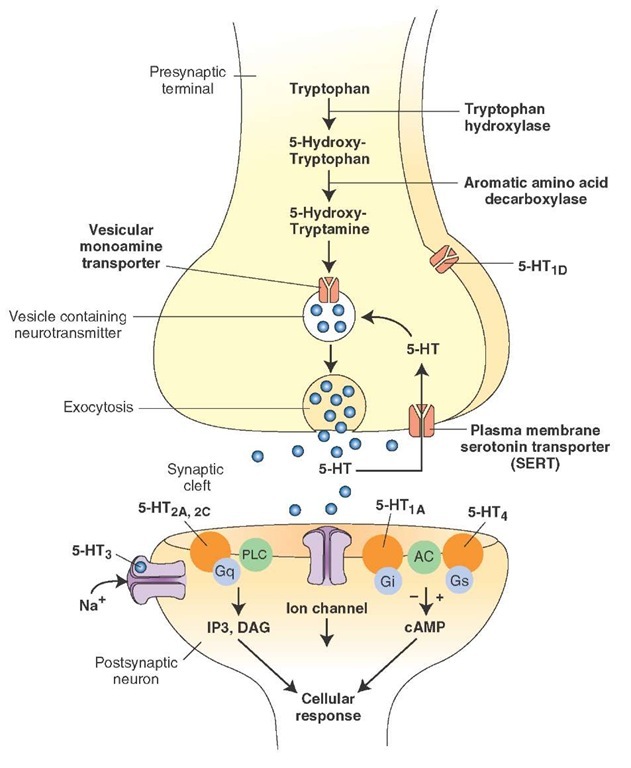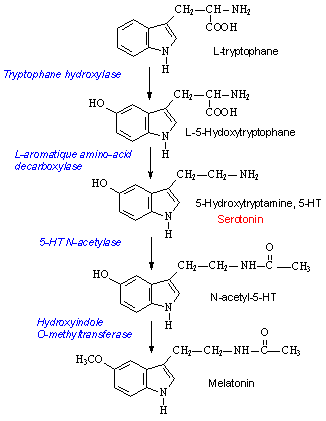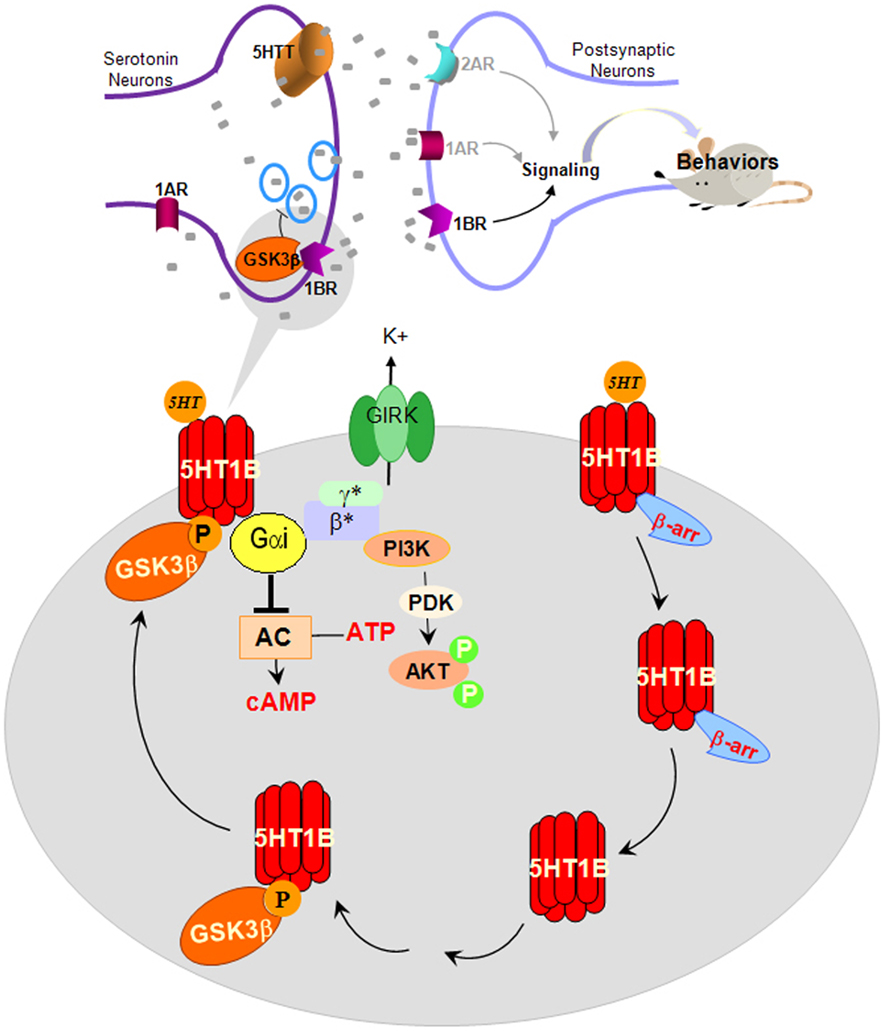Serotonin Neurons



Synthesis, transport, and metabolism of serotonin formed from exogenously applied 5-HTP after spinal cord injury in rats, 2014
Vitamin D hormone regulates serotonin synthesis. Part 1: relevance for autism. 2014
- Serotonin and vitamin D have been proposed to play a role in autism; however, no causal mechanism has been established. Here, we present evidence that vitamin D hormone (calcitriol) activates the transcription of the serotonin-synthesizing gene tryptophan hydroxylase 2 (TPH2) in the brain at a vitamin D response element (VDRE) and represses the transcription of TPH1 in tissues outside the blood-brain barrier at a distinct VDRE. The proposed mechanism explains 4 major characteristics associated with autism: the low concentrations of serotonin in the brain and its elevated concentrations in tissues outside the blood-brain barrier; the low concentrations of the vitamin D hormone precursor 25-hydroxyvitamin D [25(OH)D3]; the high male prevalence of autism; and the presence of maternal antibodies against fetal brain tissue. Two peptide hormones, oxytocin and vasopressin, are also associated with autism and genes encoding the oxytocin-neurophysin I preproprotein, the oxytocin receptor, and the arginine vasopressin receptor contain VDREs for activation. Supplementation with vitamin D and tryptophan is a practical and affordable solution to help prevent autism and possibly ameliorate some symptoms of the disorder.
Serotonin Reuptake


Circadian rythm
Using an in vitro flow-through system we demonstrated that (1) isolated retinal tissue could exhibit a rhythm of melatonin release, (2) the rhythm of melatonin synthesis is directly entrainable by 24-h light-dark cycles, and (3) supplementation of the culture medium with serotonin is necessary for robust, rhythmic production of melatonin in constant darkness. These results show definitively that the eyes are the loci of a biological clock and, in light of previous studies showing the disruptive effects of blinding on the circadian system, strengthen the hypothesis that the ocular clock is a circadian pacemaker that can affect the rest of the circadian system via the cyclic synthesis and release of melatonin.
Time keeping by the quail's eye: circadian regulation of melatonin production. 2006
Una variante genetica che per lungo tempo si è creduta responsabile di un aumento del rischio di depressione in combinazione ad eventi stressanti potrebbe non avere dopotutto alcun effetto del genere. Il gene del trasportatore della serotonina è stato il focus della ricerca genetica sulla depressione per anni, in quanto le sue varianti determinano una riduzione del trasporto della serotonina nelle cellule, ma mentre uno studio chiave del 2003 ha suggerito che una variante nella regione promoter di questo gene incrementa il rischio di depressione, una recente meta-analisi ha negato questa associazione. Ciò rammenta che attenersi strettamente ai fattori genetici implicati nelle malattie mentali, senza apprezzare la complessità degli eventi che danno luogo a queste malattie, può portare a risultati inutili in termini di prevenzione o trattamento di disordini come la depressione. (JAMA. 2009; 301: 2462-71)
Serotonin receptors

Serotonin receptors are classified into 7 types (5-HT1–5-HT7).
Each type can have subtypes A, B and so on.

These receptors are localized in brain and in peripheral organs but their distribution is not homogeneous.

5-HT receptors are
- mainly postsynaptic
- presynaptic and modulate serotonin release in the case of 5-HT1A and 5-HT1B.



The signalling pathways to which these receptors are coupled are known but it is hardly possible to systematize clinical effects corresponding to their stimulation.
Serotonin receptors are coupled to G proteins except 5-HT3 receptors which are receptor-channels, also called ionotropic receptors, which, in the activated state, are open and permeable to sodium and potassium cations.
As other transmitters, serotonin released in the synaptic cleft is mainly reuptaken by the presynaptic terminations by active transport with a specific carrier.
5-HT Receptors on Wikipedia and on ACNP
drugs interacting with 5-HT

link
The serotonin pathways in depression